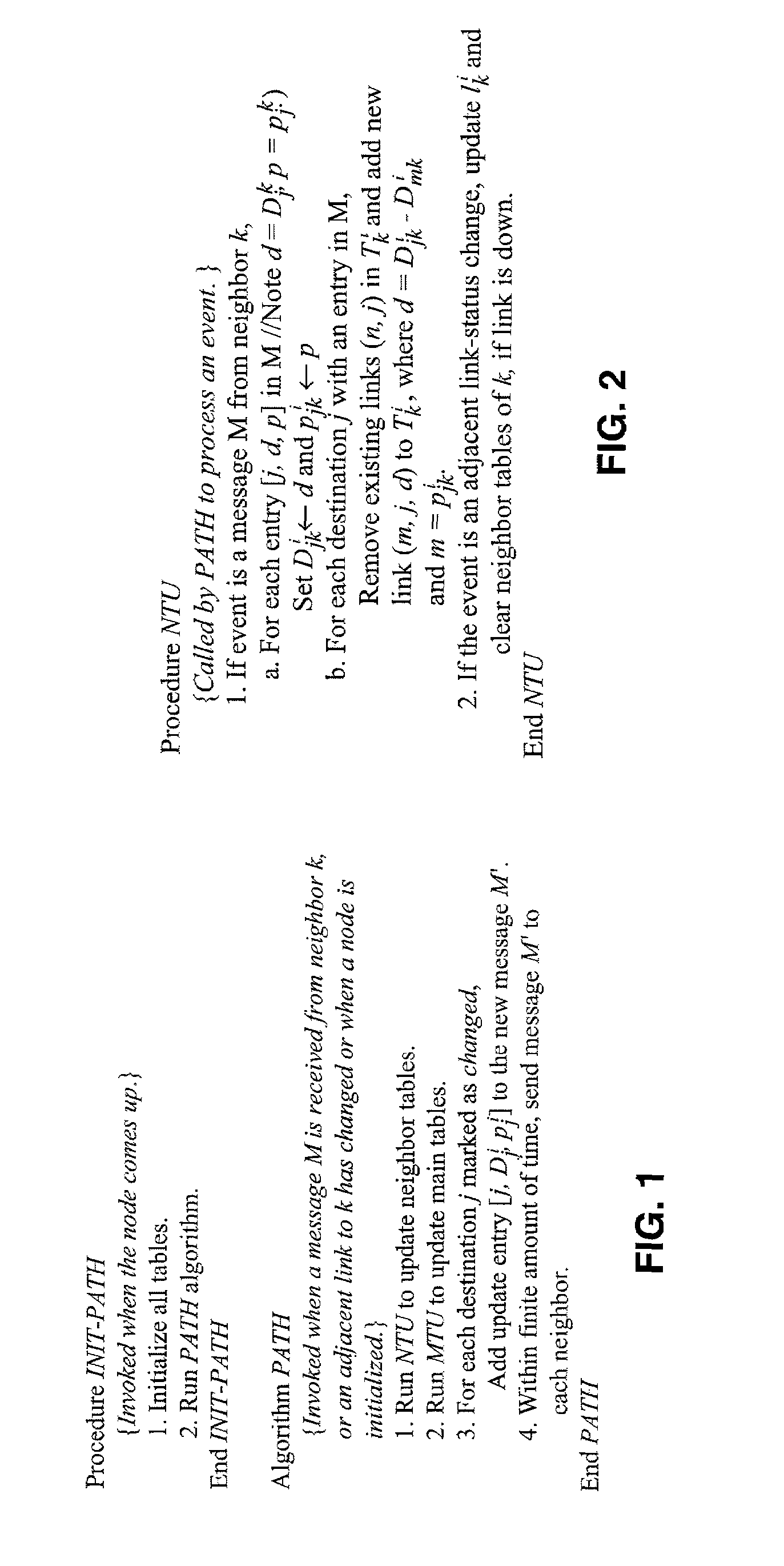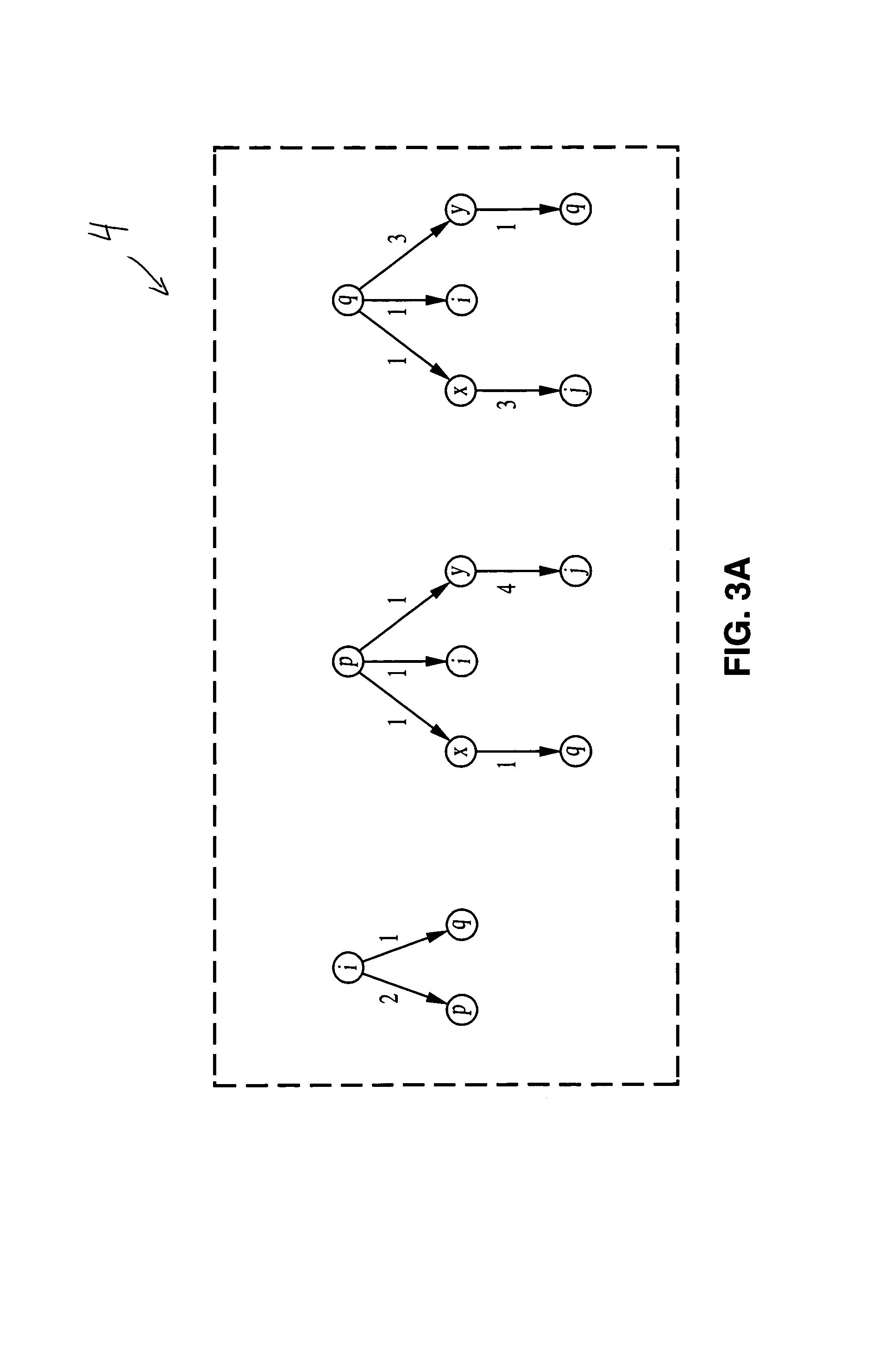Method for loop-free multipath routing using predecessor information
a multi-path routing and predecessor information technology, applied in the field of routing algorithms for computing multiple loop-free routes, can solve the problems of limiting the applicability of small networks, complex solutions, and ospf and algorithms based on topology-broadcast, and achieves the reduction of storage, time, computation, and communication requirements, and the effect of low complexity
- Summary
- Abstract
- Description
- Claims
- Application Information
AI Technical Summary
Benefits of technology
Problems solved by technology
Method used
Image
Examples
Embodiment Construction
[0029]Referring more specifically to the drawings, for illustrative purposes the present invention is embodied in the apparatus and methods generally shown in FIG. 1 through
[0030]FIG. 6. It will be appreciated that the apparatus may vary as to configuration and as to details of the parts, and that the method may vary as to the specific steps and sequence, without departing from the basic concepts as disclosed herein.
1. Distributed Multipath Routing Algorithm
[0031]1.1. Problem Formulation
[0032]A computer network is represented as a graph G=(N,L) where N is the set of nodes, typically routers, and L is the set of edges, links, connecting the nodes within the network. A cost is associated with each link that can change over time, but is always positive. Two nodes connected by a link are called adjacent nodes or neighbors. The set of all neighbors of a given node i is denoted by Ni. Adjacent nodes communicate with each other using messages and messages transmitted over an operational li...
PUM
 Login to View More
Login to View More Abstract
Description
Claims
Application Information
 Login to View More
Login to View More - R&D
- Intellectual Property
- Life Sciences
- Materials
- Tech Scout
- Unparalleled Data Quality
- Higher Quality Content
- 60% Fewer Hallucinations
Browse by: Latest US Patents, China's latest patents, Technical Efficacy Thesaurus, Application Domain, Technology Topic, Popular Technical Reports.
© 2025 PatSnap. All rights reserved.Legal|Privacy policy|Modern Slavery Act Transparency Statement|Sitemap|About US| Contact US: help@patsnap.com



